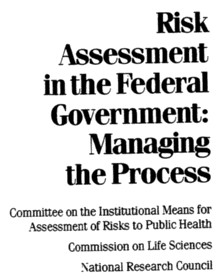Some of the regulatory barriers that crop developers face in commercializing GE crops include the:
- Complex regulatory framework.
- Lack of a road map that delineates how to navigate through the regulatory framework to achieve the freedom to commercialize (e.g., in the United States, achieving nonregulated status from the U.S. Department of Agriculture’s Animal Plant Health Inspection Service, APHIS).
- Costs associated with meeting the safety standard of “substantial equivalence”.
- Challenges and costs related to collecting extensive, relevant, and comprehensive data sets.
- Lack of standardization for data collection and analysis.
First regulations for GE crops were developed in the United States in the 1970s.
Three regulatory agencies require different and sometimes duplicate data despite operating under a “Coordinated Framework”
Waiver authority was granted in a subsequent revision to the guidelines under which the NIH developed a process for determining the conditions for permitting the deliberate release of GE crops into the environment. This “waiver authority” was used for the first transgenic plants and serves as the precursor to current U.S. regulations governing GE crops.
1986: Coordinated Framework for Regulation of Biotechnology was published in the U.S. Federal
Register and included policy statements from the agencies involved, as well as a proposed USDA regulation governing the introduction of organisms and products developed through genetic engineering.
The Organization for Economic Development and Cooperation (OECD) began to focus on genetically engineered plants beginning in 1983 with discussions that culminated with the publication of the OECD publication “Recombinant DNA Safety Considerations,” referred to as the “OECD Blue Book” and occurring at the same time as the development of the U.S. Coordinated Framework. Importantly, the OECD Blue Book included key risk assessment concepts such as “case-by-case” and “step-by-step” approaches...progressively decreasing physical containment of genetically modified organisms (i.e., from the lab, to contained research environments, small-scale field testing, and subsequently large field testing).
In the United States, the basis for formal regulatory risk assessment began with the publication
in 1983 of the “Red Book” by the National Research Council. The two essential elements that form the basis of regulations are outlined in the Red Book — risk assessment and risk management.
Risk assessment is the process of using factual information to define the effects of exposure to hazardous materials and situations.
Risk management is the process of weighing policy alternatives and selecting the most appropriate regulatory action.


